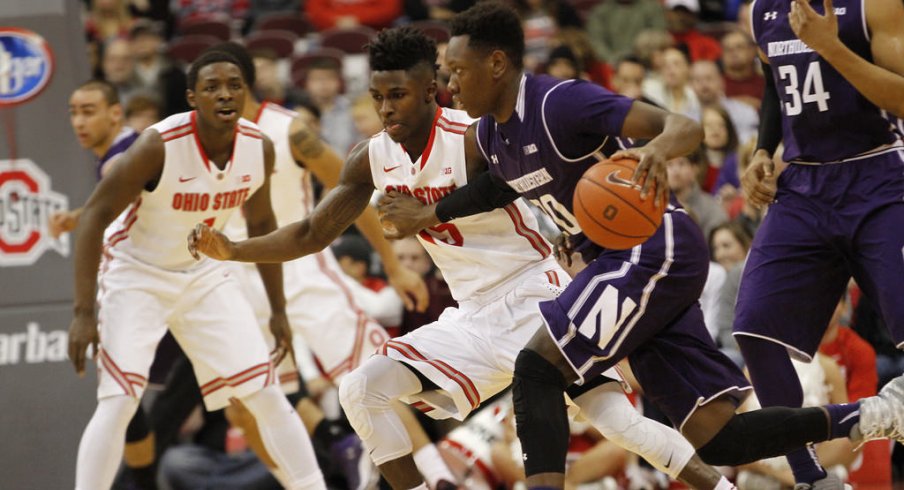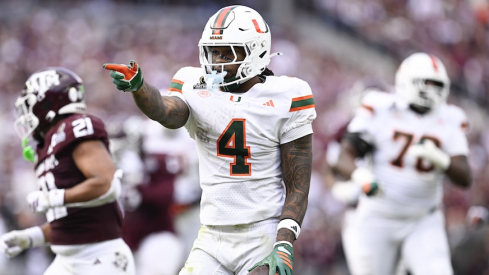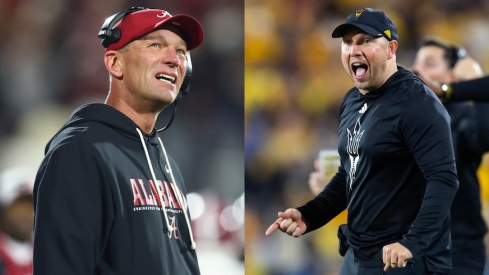A week ago, I covered Ohio State's defensive issues in the half court against Wisconsin. Nothing leads me to believe the Buckeyes have any systemic problems. The occasional lapses in communication, concentration and effort are expected in a long season, especially from a young team.
Thad Matta and his staff are determined to make sure the Buckeyes don't get into any bad habits on that end. Plus, forcing turnovers and controlling tempo can be helpful – so the staff decided to introduce a press zone as a means to accomplish those goals.
"We've been practicing it now for a month. Every time we score [in practice] we get in it," Matta said in a press conference, Friday. "I think it's something that could continue to work for us. I thought it gave our guys a little more emotion, a higher gear, if you will."
I first noticed Ohio State's use of a zone press during their loss at Purdue, Jan. 21. The Buckeyes extended it slightly beyond halfcourt and trapped along the sidelines, forcing 5-foot-10-inch guard P.J. Thompson to throw it over the top:
OSU would go on to use it sparingly throughout the next four games, out of timeouts or other drawn out dead-ball situations. Matta just wanted to get a feel for how his team would handle it during in-game situations.
Opposing teams didn't have much film on it, so Ohio State nearly capitalized on their confusion:
A combination of Keita Bates-Diop, JaQuan Lyle and Marc Loving or Kam Williams are usually the point men in the attack – the 1-2 in the 1-2-2 press. The idea is for them is to force the ball out of the middle of the court. If the opposition happens to dribble towards the middle, it forces the defense to scramble.
Wisconsin doesn't necessarily break the press, here, but watch how Bates-Diop, Loving and Lyle work in concert when Ethan Happ fakes an over-the-top pass against a half-hearted trap:
Lyle picking up Bronson Koenig and a Badgers team lulled into playing a slower pace allowed the Buckeyes to slip back into their typical half-court man defense. If Koenig pushed the ball up court, perhaps he would've hit an open Nigel Hayes or had a potential three on two situation.
That's what makes the back line of the press important. In practice, Matta noticed it wasn't a five-man effort.
"When you run that type of press, all five guys are in the press. At times, we've only got three and a half or four guys in the press," he said. "We're working on that, trying to get them to make it more effective."
Against Rutgers, the perpetually pesky Corey Sanders posed problems all over the court. Bates-Diop, Williams and Loving all allowed him to get into the middle of this press – luckily, Tate cleaned things up on the back end by drawing a charge:
Ultimately, the key to the zone is Bates-Diop. Although we've seen Loving at the top of the press and Lyle or A.J. Harris have worked at the top in practice, it's Bates-Diop who makes it the press effective.
"Probably because I have a really long wingspan. Normal passes you just loft over guys I, kind of, tip," Bates-Diop said. "The time it takes for them to pass is a couple more seconds. With ten seconds to [get out] of the backcourt, that makes a huge impact. They have to rush it up, they have to slow it down. They have no idea what to do."
The confusion Bates-Diop speaks of might be specifically targeted at Northwestern. Ohio State increased the ball pressure in their game against the Wildcats, extending the zone to the full court:
Bates-Diop's length frightened Northwestern. On this play, the ball didn't cross halfcourt until 21 seconds remained on the shot clock:
It's unlikely the Buckeyes score 18 points off turnovers again this season because of the difficult schedule remaining. Matta won't install the 1-2-2 zone press for all 40 minutes, but it's proven to be a reliable way to control pace.


